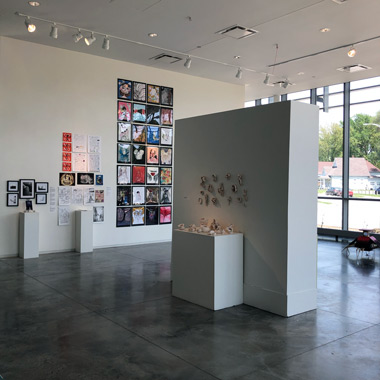Outside of the busy Western entrance to Eskenazi Hall is a fabricated aluminum sculpture that students, faculty, and staff walk by several times a day during the academic year — maybe without ever knowing the artist or its history.
Eric Nordgulen created the sculpture, called "Antenna Man," in 1998 as a prototype for a larger version, which was installed at Chicago's Navy Pier a year later. Nordgulen is a professor of sculpture at Herron, an Efroymson Contemporary Arts Fellow, and a recipient of numerous grants and commissions related to public art. "Antenna Man" is just one of his many installations on the IUPUI campus, at the heart of Indianapolis, and across the country.
While we could possibly create a do-it-yourself tour mapping out where to find Nordgulen's public art, instead we are featuring him for our next round of "Five Questions," a series of Q&As in which we ask various faculty members for sage advice and insight into their creative disciplines.
HERRON: You describe sculpture "as a means to explore one's relationship to their surroundings." How does this inform the way you view the world as an artist?
ERIC NORDGULEN: When a person encounters art of any kind, they experience something that is new and different. In order to try to understand art, you must compare it to things you already know and are familiar with. So, art can provide a new vantage point to consider what we know and understand about the world, and sometimes this new experience can change the way we see things we thought we understood or take for granted.
General themes in my work have at times been something to do with the human figure or the implied presence of a person; objects we use for basic survival needs, such as a lifejacket, canteen or canoe; and objects recognized as natural forms used in combination with industrial forms.
HERRON: Many of your sculptures are permanently on display in Indianapolis. In what ways does public art add meaning to our communities and the built environment?








